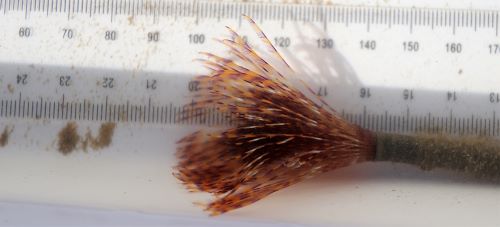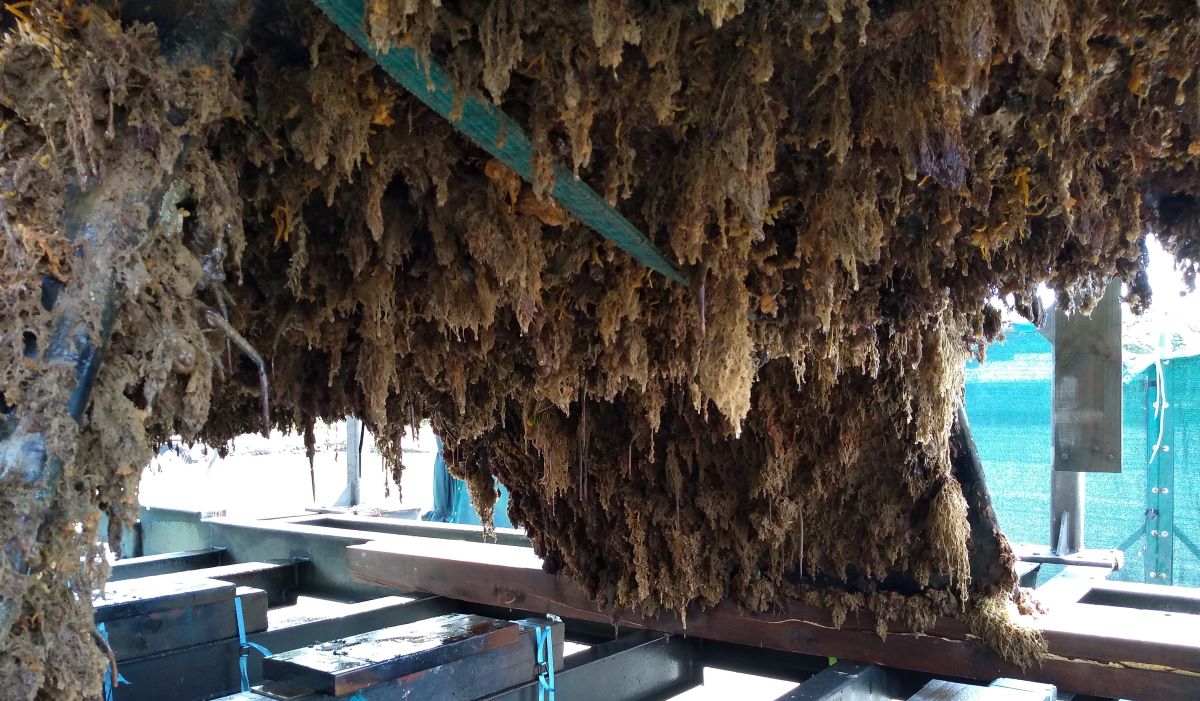Fanworm found on Mangonui-based boat
10 Mar 2020, 8:50 AM
The discovery of Mediterranean fanworm (Sabella spallanzanii) on a Mangonui-based boat has prompted renewed calls for boaties to be extra vigilant for unwanted marine pest hitchhikers, especially when travelling to areas known to have the pest.
Don McKenzie, Biosecurity Manager for the Northland Regional Council (NRC), says dive contractors discovered the infested boat moored in Mangonui Harbour in February as part of a regular Northland-wide hull surveillance programme.
The discovery sparked a prompt response from the council and Biosecurity New Zealand, with the 13.5 metre twin-masted ketch ordered out of the water for immediate cleaning.
A team of Northland-based diving contractors had subsequently found and removed six individual fanworm from the seafloor directly under the vessel.
 A file shot showing a fan worm removed from another Northland location last year. The image shows the fanlike crown of feeding tentacles that extend out of its tube, giving the fanworm its name.
A file shot showing a fan worm removed from another Northland location last year. The image shows the fanlike crown of feeding tentacles that extend out of its tube, giving the fanworm its name.
The area under and near its mooring site had been intensively searched as were several other key structures and potential sites that could be hiding fanworm in the wider area.
Mr McKenzie says the mooring owners in the area are being notified of the find.
“At this point, we still don’t think there’s an established local population of this pest but we’ll be continuing active surveillance in the lead-up to winter so we can re-evaluate things if necessary.”
Mr McKenzie says divers will do regular searches over the period and will be removing any fanworm they find, but other than the initial findings, “our follow-up searches of other moorings, structures and vessels in the wider area have all been fanworm free.”
“At the moment we’re hopeful things have been caught early enough that we can accurately determine the extent of any infestation and successfully remove any fanworm from the area.”
Mr McKenzie says timing is crucial when it comes to attempts to contain fanworm, which are unwanted because they can form dense beds, forcing out other species (including natives) and interfering with other species’ natural processes like breeding.
“Eradication of fanworm in newly-infested areas is possible, but only if the population is caught early enough.”
He reiterated earlier council messages to boaties that it’s vital to ensure their vessel and any associated equipment is clean and free from fouling which may contain marine pests like fanworm, especially if they were returning from/travelling to areas known to have established fanworm populations.
“Under regional council rules, it’s an offence to transport marine pests in Northland.” “Vessels entering Northland and moving between harbours must have no more than ‘light fouling’ on their vessel.” (Light fouling is classified as a slime layer and/or barnacles, and up to five percent macrofouling).
Mr McKenzie urges people encountering marine pests to notify the regional council as soon as possible by phoning (0800) 002 004 or emailing marinebiosecurity@nrc.govt.nz
He says information on a range of marine pests can be found at www.nrc.govt.nz/pestcontrolhub while the council’s rules and marina requirements can be found at www.marinepests.co.nz

Thick biofouling – including unwanted Mediterranean fanworm – covering the hull of a vessel recently ordered out of the water at Mangonui for cleaning.
